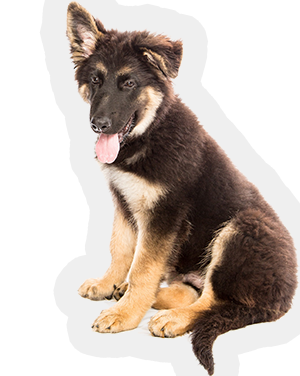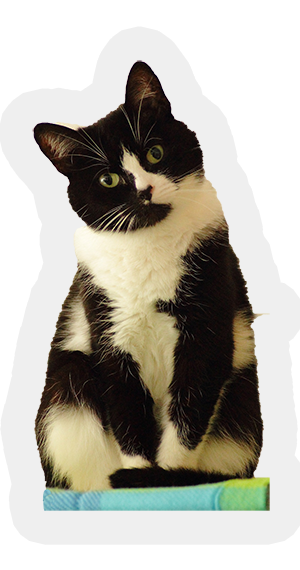
Static (11)
![]()
Thank You!
Your order has been received.
Welcome to the Retailer Tools section of the website. Please login to access the this area.
Site Map
HOME
Products For Dogs & Cats
Meat & Vegetable Blends // Meat & Botanicals Blends // Raw Beginnings // Can Be Cooked // Tollden For Cats // Do It Yourself Components // Meaty Bones
Our Story
Why Tollden Farms // Testimonials
Raw Starts Here
Benefits of Feeding Raw // Making the Switch to a Raw Food Diet // Bacteria and Raw Pet Food // The Role of Botanicals
Helpful Tools
Contact Us // Search // FAQs // Feeding Guide // Retailer Tools // Find a Store

Tollden Farms is available in over 180 retail locations across Ontario and Quebec. Due to the manufacturing and distribution function of our facilities, we do not have a retail store front, and are not open to the public. For a list of retail locations, please visit the store locator page.
Fax:
Contact Us
This email address is being protected from spambots. You need JavaScript enabled to view it.
Historically, herbs and spices have been used for adding flavors and tastes to foods. They provide unique flavors and/or enhancing tastes to human diets. However, their uses may be beyond adding flavors and/or tastes to foods, because most herbs and spices used in culinary purposes have a long list of potential biological effects on health. In fact, herbs and spices are prepared from the plants, whose traditional uses are back to old medicinal remedies for preventing and/or treating human disease for many years. Numerous studies also indicate that phytochemicals in herbs and spices may be accountable for their health effects. Truly, phytochemicals isolated from plants have been a great resource for discovering a large proportion of commercially available medications for the treatment of a wide range of human diseases such as pulmonary diseases, cardiovascular diseases, diabetes, obesity, and cancers. As indicated, in the old time, herbs and spices might play curative roles of medicines at a large scale. Indeed, herbs and spices have potentials in providing beneficial effects on human health through their life-long exposure to preventive and therapeutic phytochemicals, in contrast to medicines that provide therapeutic treatment in a short-term basis.
 Prevention of disease is much easier than curing disease and herbs work to harmony the “Yin and Yang” of the body and help to make the body immune to, or more resistant against, many serious diseases. Quite simply the use of botanicals is in not only to help cure various disease but in the prevention of becoming ill.
Prevention of disease is much easier than curing disease and herbs work to harmony the “Yin and Yang” of the body and help to make the body immune to, or more resistant against, many serious diseases. Quite simply the use of botanicals is in not only to help cure various disease but in the prevention of becoming ill.
The chosen herbs in our Botanical Blends strengthen and improve specific organs, systems, weaknesses or the body as a whole. They are generally gentle herbs that are used to stimulate and increase the function of organs that are not operating at their highest level and to prevent a decline in the function of organs. Tollden Farms Botanical Blends are designed to assist the body in healing itself for permanent cure.
Knowing about the nutritional value of herbs can change your attitude toward using them as part of your pet’s dietary intake; adding generous portions of herbs to food becomes more than just adding flavour. Herbs can also be added as a pleasurable way of avoiding nutritional deficiencies.
Not only is what your pet eating important, but the efficiency with which food is absorbed is crucial. Many herbs stimulate digestive enzymes and encourage efficient intestinal activity. Some of these are still used as culinary herbs; Bitter herbs such as Dandelion encourage liver function. Parsley is an excellent source of vitamins K and C, as well as vitamin A, folate and iron. Burdock Root is an excellent lymphatic system strengthener. Oatstraw tops are an excellent source of calcium, and helps perform cognitive performance. Lemongrass helps with alleviating stomach ache, achy joints, and exhaustion. Kelp contains a myriad of trace vitamins and minerals, as well as being an excellent support for the thyroid gland.
Why Consider Botanicals
Ever watch your dog in an open field in the spring time? Chances are you’ll have witnessed him/her grazing on new grasses, eating dirt and even chewing the bark off of sticks.
How do animals in the wild keep themselves healthy? They seek out and eat plants with medicinal properties. They seek out foods for a nutritionally balanced diet.
When laboratory scientists started to explore how animals select their diets, they quickly found that rats that are presented with a range of foods “cafeteria style” will select a nutritionally balanced diet. This ability is termed “nutritional wisdom” and can be loosely applied to the way in which wild animals manage to meet their nutritional needs from foods that are often changing in composition, availability and location.
Animals clearly eat food that both prevents and cures ills. They are able to find substances that protect against future illness and seek out unusual substances that remedy ill health.
Most scientists describe this sort of behavior as self-regulation or homeostatic behavior as the substances involved are normally considered nutrients.
While the physical structure of a dog's teeth, jaws, and intestinal system tell us they are natural carnivores, they also require some plant matter in their diet. Canine and feline species in the wild ingest the stomach and intestines of their plant-eating prey. In doing so, they consume partly digested plant matter, which helps in digestion of the flesh and bone they feed upon.
In her book, The Complete Herbal Handbook For The Dog And Cat, author, herbalist and long-time dog breeder Juliette de Bairacli Levy writes: "I am always amazed at the way my Afghan Hounds have selected their medicinal plants, shrubs and trees, and know where to find them and how to use them.”
The concept of the Botanical Blend came about after years of research into what these “food items” were providing for dog.As a result of our research, we developed our Botanical Blend which has a mixture of ground seeds, roots and grasses, with unique properties to help enhance the immune system of your pet.
Subsequent to our feeding trials of this type of formulation and in feeding thousands of animals over the past decade, we’ve found some dogs and cats do better with this type of blend. Dogs with chronic allergies, dermatitis, yeast infections and various immune system challenges do well on this type of blend, as so dogs and cats with irritable bowel diseases, colitis, and inflammation of the intestinal tract.
Vegetable Blends
 Tollden Farms strongly believes that dogs do require some vegetable matter in their diet to ensure longevity and health. Vegetables provide an excellent source of vitamins and minerals. The majority of the vegetable matter in our diets is of the green leafy variety, each providing their own unique properties to the diet for the health of your pet. Romaine lettuce provides an excellent source of fibre, potassium, biotin, copper, iron and vitamin C, as well as a variety of trace minerals. Kale is an excellent source of iron, Vitamin K, and is also considered an anti-inflammatory as well as good for cardiovascular health. Dandelion is rich in vitamins c and B6, thiamin, riboflavin, calcium, iron. Dandelion is an excellent support for liver function. Carrots are a very good source of Vitamins A, C K and B8 as well as being an excellent antioxidant. Sweet Potato is a good source of Vitamin C, A, manganese, and other trace minerals.
Tollden Farms strongly believes that dogs do require some vegetable matter in their diet to ensure longevity and health. Vegetables provide an excellent source of vitamins and minerals. The majority of the vegetable matter in our diets is of the green leafy variety, each providing their own unique properties to the diet for the health of your pet. Romaine lettuce provides an excellent source of fibre, potassium, biotin, copper, iron and vitamin C, as well as a variety of trace minerals. Kale is an excellent source of iron, Vitamin K, and is also considered an anti-inflammatory as well as good for cardiovascular health. Dandelion is rich in vitamins c and B6, thiamin, riboflavin, calcium, iron. Dandelion is an excellent support for liver function. Carrots are a very good source of Vitamins A, C K and B8 as well as being an excellent antioxidant. Sweet Potato is a good source of Vitamin C, A, manganese, and other trace minerals.
The combination of these vegetables helps to support immune health, and the addition of green, leafy vegetables is also believed to help support joint health, as well as providing excellent antioxidants which are proven to help fight disease.
Tollden Farms diets contain 10% of vegetable matter, making it an excellent choice for both Dogs and Cats.
Bacteria and Raw Pet Food
Author: Audrey Blanco
The microscopic world around us is so vast that if every living thing and every non-living object were to suddenly disappear, except for the microscopic life, you would still be able to see the outline of everything that was gone. That's a lot of microscopic life. Without these organisms every other living being would soon die.
As human beings we depend on our bacteria to perform many biological functions for us and to protect us from disease. "Protect us from disease?" you may say, "I thought bacteria caused disease!" Well some do, but there is a balance that we have to achieve in our bodies.
The billions of bacteria that live with us (and our pets) in harmony are called our normal flora. Normal flora is essential to our health in several different ways:
- They protect us from invasion by disease-causing bacteria by using up the nutrients that disease-causing bacteria need.
- Their waste products are sometimes toxic to disease-causing bacteria, thus preventing their growth.
- They stimulate our immune system to keep them active.
- They help to digest our food and releases the nutrients that our bodies need.
- They produce vitamin K and certain B vitamins in our intestines. This function is performed by billions of E. coli bacteria in our intestines. Yes, E. coli can be good.
Bacteria That Can Make You Run
Salmonella
Salmonella organisms are found in the intestines of virtually all animals, including poultry, reptiles, livestock, rodents, birds and humans. Animal-to-animal spread and Salmonella-containing animal fed maintain the reservoir. The most common sources of human infection are poultry, eggs, dairy products, and foods prepared on a contaminated work surface. Humans are exposed to Salmonella bacteria on a regular basis, although most of us have never suffered disease due to exposure. Our main defense against disease with Salmonella is our stomach acid. Salmonella is very sensitive to and dies easily in the presence of acid. A dog's stomach is much more acidic than ours, so they have even more protection. Human beings need to consume a whopping dose of Salmonella in order to get sick, as most organisms are killed in the stomach. The number is somewhere in the order of 100,000,000 Salmonella bacteria. These amounts are not usually present in food that has been handled properly. Purchasing your raw meat from a reputable source should mean that it was kept at appropriate temperatures before delivery to you. Proper storage of meat after purchase should eliminate any further problems.
Symptoms generally appear within 6 to 48 hours after exposure and include nausea, vomiting and non-bloody diarrhea. Fever, cramps, muscle aches and headaches are common. Symptoms usually disappear within 2 to 7 days without treatment. About 10 percent of affected patients go on to develop complications that may require treatment. These patients are usually ones with a weakened immune system, the elderly or children.
Children are more susceptible to disease caused by Salmonella in part because their immune systems are not as well developed as adults and in part because they tend to have poorer hygiene than adults. Encourage children to wash their hands after handling any pet and discourage doggy kisses, if you like - but the likelihood of 100,000,000 Salmonella bacteria being present in a doggy kiss is virtually non-existent.
Campylobacter
Campylobacter infections can be acquired from consuming contaminated food, milk or water. Eating undercooked, contaminated poultry products causes over half of all Campylobacter infections in humans. The disease caused by this organism is not as serious as from Salmonella, and usually resolves without treatment. Once again, the severity of the disease is determined by the number or bacteria consumed. Campylobacter is the most common cause of bacterial food poisoning.
Symptoms of the disease include diarrhea, malaise, fever and abdominal pain. Symptoms usually resolve within a week without treatment and long-term complications are extremely rare.
I find it interesting that the domestic dog, as well as the chicken, carries Campylobacter in its intestines normally. This means that many of us who share our lives with dogs have in fact been exposed to these bacteria on a day-to-day basis. It is also interesting that I have not heard of a single case of Campylobacter disease contracted from exposure to the family dog, although I understand that they have been reported in the literature.
E. Coli 0157-H7
Since the incident in Walkerton, Canada, the mention of E. coli tends to strike fear into people's hearts. There are thousands of strains of E. coli. E coli 0157-H7 is only one strain, and a fairly rare strain at that. It is not carried by chickens, but by cattle and other large grass-eating animals. Very few cattle carry these bacteria and then only in their intestinal tract, not in the muscle meat. Slaughterhouses check for these bacteria, which is why there is the occasional recall of ground beef. The reason that ground beef is the major culprit is that sometimes intestinal contents contaminate the muscle neat during the slaughter process. The surface of the muscle meat becomes contaminated. Then during grinding of ground beef, the entire batch can become contaminated. Unpasteurized fruit juices from orchards that may have been contaminated with cattle feces can also be a source.
E. coli 0157-H7 causes disease that ranges from fairly mild in most healthy adults to extremely serious in up to 10 percent of children under the age of 10. Disease can be caused by ingestion of fewer than 100 bacteria. Symptoms range form mild diarrhea to extremely bloody diarrhea with severe abdominal cramps. In a small percentage of children renal failure and death can occur.
The key to avoidance of disease is to cook all ground beef for human consumption to a well done state. Avoid cross contamination of all surfaces in your kitchen by always using a different cutting board for meat products than for vegetables and other goods that might be served raw. The same goes for cross contamination of knives and other utensils.
We tend to be clean in our own homes while preparing our pet foods. A rendering plant does not necessarily share our views. I have more concerns personally about what is present in commercial pet foods, than about anything I prepare with love at home.
Cleaning Up
A final word about cleaning up after preparing raw food. Please try to eliminate the amount of cleaning products you use that are marked "antibacterial". These products are harmful to the environment. They kill our normal flora that protects us, thus weakening our own immune systems. They cause bacteria to mutate and give them more protection to antibiotics and antibacterial products. Losing the war with bacteria by helping them to become more and more resistant to antibiotics is the one thing that does scare me. Doctors are partially responsible by over-prescribing antibiotics.
We consumers are also partially responsible. Antibacterial soaps are not necessary. Wash your hands after food preparation, with a regular soap and water. This is enough to remove any bad bacteria and leaves the good ones intact. A suitable household disinfectant is regular household bleach, mixed 1 part bleach to 4 parts water. This kills bacterial instantly and gives them no chance to mutate. It is also not harmful to the environment. Bleach or Lysol products for bathroom cleaning are O.K. - all of the common sense rules apply. Use stainless steel or glass bowls for pet foods, they are non-porous and easier to clean. The same goes for cutting boards. Wood is porous and may trap bacteria. Do not use the same cutting board for meat as for vegetables. Hot, soapy water is sufficient for the clean-up of dishes, and the dishwasher is even better. Bleach your cutting boards if you have no access to a dishwasher.
Relax and know that you are doing the best for your pet, and that with a little common sense you and your family are not likely to catch anything from the preparation or feeding of raw pet foods.
Sources:
Murray, Rosenthal, Kobayashi, Pfaller, Medical Microbiology, Mosby, Inc. 1998; Nester, Roberts, Pearsall, Anderson, Nester's Microbiology-A Human Perspective, McGraw-Hill, 1998; Audrey Blanco is a Registered Technologist at the Department of Clinical Microbiology at Royal University Hospital, Saskatoon, Saskatchewan.
Tollden Farms is made from humanely raised, government inspected, human-grade ingredients, and where possible we’ve used organic products. We have the widest variety of diet options available with either the meat and vegetable blend diets or the meat and botanical blend diets. We recommend you rotate between a variety of protein sources for the widest range of available nutrients.
IMPORTANT:
Always use safe handling practices when feeding raw meat products. Never cook products that contain bone. Information contained herein does not substitute veterinary advise. Tollden Farms does not assume responsibility for the care and handling of one's pets.
Most dogs and cats can make the switch to raw foods cold turkey. Unless your pet has an intolerance, we recommend starting with the chicken diet, either with vegetables or the botanical version. Stick with the same protein source for about a week, then start rotating between a variety of proteins.
If your pet is straining to defecate, increase the mammal meat diets, like beef, lamb or venison. This straining simply means your pet is not utilizing the calcium of the ground-bone type diets of chicken or turkey. Conversely, if your pet is having too many loose stools, increase the poultry diets. As animals age, we find they use less calcium and require a greater portion of mammal-meat diets.
You know your pet best, if you feel your pet suffers from any severe illnesses, it may be best to make a slower transition. Talk to your veterinarian (who is not opposed to raw food feeding) on how to make the switch.
Feeding Dogs

We recommend rotating between as many protein sources as are available to you. The greater the variety, the broader the nutrients available to your pet, which will create the optimum balance over time.
We offer two diet recipes, one is the meat and vegetable blend, consisting of 10% vegetables, the other is the meat and botanical blend, which consists of about 1% ground roots, grasses, leaves and seeds.
Each offers their own benefits and even rotation between the two diet plans would provide even greater nutrients and variety.
If your dog likes chewing on “recreational” bones (and most dogs do), we carry a wide variety of bones for your dog to choose from. Please note that some bones (beef marrow bones) will contain a much higher fat content than normal meals, and this must be taken into account for your dog’s overall calorie count for the day. Turkey necks, chicken necks, boar bones would all be considered meal bones, and should be fed as a meal. Along with regular exercise, recreational chewing will round out a well-balanced, healthy dog’s life.
Variety will help ensure your pet is getting all the nutrients it needs to live a long and healthy life.
Adult dogs should be fed between 2-3% of their body weight per day, puppies should be fed between 5-7% of their current weight per day. Please note this is just a guideline, increase or decrease food as per age and activity level.
Feeding Cats

The digestive system in cats and dogs will bear the brunt of poor food nutrition. Other organs affected include the liver, pancreas, kidneys, and skin. The liver and pancreas as part of the digestive process and the liver, kidneys and skin as the elimination process. As with humans, fresh foods provide the healthiest source of nutrition. This is partly because many nutrients like vitamins and enzymes are extremely sensitive and easily destroyed by heat and processing.
Cats being true carnivores derive their entire nutrition from the consumption of other animals. This is critical for health and attempts to feed cats a vegetarian diet or a diet based on grains will ultimately lead to malnutrition. While dogs may tolerate a large amount of non-meat items in their diets, cats are obligate carnivores and they must consume an almost all-animal diet to maintain health.
Cats are frequent eaters of small meals. For that reason, have a small number of meals thawing at all times and be ready to feed these as required. Small pieces of raw meaty bones can be similarly available. Also be sure to feed red meat diets on a regular basis.
Cats require a certain amount of amino acids in their diet to ensure eye, brain and heart health. Tollden Farms uses taurine-rich meats to ensure that cats are getting all the taurine they require to remain healthy for all life stages.
Cats manufacture glucose all the time, and are always burning protein. They turn protein into glucose and don’t rely on carbohydrates for energy.
Never fast cats in order to make the transition to raw foods. Cats should never go more than ½ a day without food. If your cat is not accepting the raw food, just add the tiniest amount to their kibble or canned meal and try to make the transition slowly. Some cats can be tricky to switch to raw food. The benefits to cats are well worth the trouble.
Adult cats should be fed between 2-3 % of their body weight per day, kittens should be fed between 5-7 % of their current weight per day. Please note this is just a guideline, increase or decrease food as per age and activity level.
Some Additional Information
- It’s advisable to have your veterinarian’s support in feeding a raw food diet. If you need the names of veterinarians who support raw feeding, ask the owner of the store where you purchased Tollden Farms.
- Because processed/cooked foods digest at a different rate than raw food, we recommend that you don’t feed a combination of kibble/cooked with raw in the same meal. If you choose to include kibble as part of your rotation, simply feed as a separate meal.
- Always supervise bone chewing as bones represent a choking hazard.
- The object is balance over time, variety is essential for delivering the widest range of nutrients to your pet.
- Salmonella and bacteria that are dangerous to humans are generally not harmful to dogs and cats.
There is a greater awareness among pet owners these days.
The areas of health and nutrition are of utmost importance in caring for your companion animal.

Through evolution, the bodies of dogs and cats have superbly adapted to maintain health on the foods that were most easily available to them in the wild. These would have been raw foods, also known as a biological diet.
It goes without saying that the foods our pets’ bodies have evolved to thrive on throughout millions of years are not the processed, grain-based, commercial foods of the last fifty years.
Look inside your dog or cat’s mouth. Their teeth are designed for tearing into flesh, not tearing into kibble.
Natural, raw foods set up and maintain healthy, natural biochemical reactions. These biochemical reactions set up a natural line of defense - a healthy immune system - that continuously fights off bacteria, viruses, and parasites.
So by restoring your pet to his natural, health-giving diet, you can restore the myriad natural biochemical reactions that give strength to his immune system. This is the “magic” that keeps pets who are fed natural diets free of many of today’s “inevitable” diseases.
Raw food is living food. It is food that has not been processed or heated above 118°C (244°F). It's food that contains the enzymes necessary for digestion as well as all the natural vitamins and minerals inherent in the specific vegetable or fruit. Raw food is probably the only basis for optimum nutrition.
 Tollden Farms has been producing our high quality raw food since 2002. We are constantly researching nutrition, and we apply all of our knowledge to developing and producing what could be considered the best raw food available on the market today. Our quality is unsurpassed, all of our suppliers are carefully researched in order to provide your companions with the ultimate in nutrition. Our prices are comparable to a premium-priced kibble and a natural diet will help save you costs at the vet clinic. We believe that fresh is best, whether you are a dog, a cat or a human. A fresh food diet is the first step to a healthy body.
Tollden Farms has been producing our high quality raw food since 2002. We are constantly researching nutrition, and we apply all of our knowledge to developing and producing what could be considered the best raw food available on the market today. Our quality is unsurpassed, all of our suppliers are carefully researched in order to provide your companions with the ultimate in nutrition. Our prices are comparable to a premium-priced kibble and a natural diet will help save you costs at the vet clinic. We believe that fresh is best, whether you are a dog, a cat or a human. A fresh food diet is the first step to a healthy body.
Tollden Farms believes that quality comes first. Our dinners contain only the freshest human grade proteins, and the freshest vegetables. For the vegetable dinners, we use whole cuts, and whole organs. We do not use any by-products or foods not deemed fit for human consumption. Vegetables always consist of Romaine lettuce, kale, collards, dandelion, zucchini, carrots, and sweet potato. Our vegetable dinners are made of 85% top quality protein cuts and 10% vegetables, with green leafy vegetables making up the bulk. We add cold water quality fish oil (a combination of mackerel, anchovy, and sardines) and kelp to complete the diet.
Our passion is the health of companion animals and we are proud of the quality and care that goes into each and every batch of food. Click here for a list of retail locations across Ontario where our food is available.
Our Products
Tollden Farms is proud to be Canadian owned and operated. Using a set of guidelines developed for the raw pet food industry, Tollden Farms follows these standards to ensure the integrity of the products we sell. We also use these guidelines to help establish minimum standards of safety in the production of raw pet foods. Working with the guidance of various government agencies at both the provincial and federal level, Tollden Farms expects these guidelines to improve both the quality of product and level of information provided to the consumer.
Our dinners are triple ground and come in a three formats: Meat & Vegetable Blends; Meat & Botanical Blends; or Do It Yourself (DIY) components. We've packaged Tollden Farms in a multiple of convenient sizes; 8 lb bags, portioned in ½ pound patties and 3 lb bags, portioned in ¼ pound patties.
Tollden Farms has a wide variety of protein sources and formulations so you can rotate and receive the nutrients supplied in each different product. We have beef neck, marrow and boar bones to satisfy your dog's instinctual need to chew.
If you wanted to feed a raw diet, but were put off by the preparation, our diet is the answer.
More...
Getting your portions right has never been easier! Simply enter your pet's weight and activity level then let our clever raw feeding calculator do the rest!
Please note that just like us, no two dogs or cats are the same, so you may find you need to adjust the amount depending on your pets activity levels and metabolism. If you are feeding to lose or gain weight, you can input a target weight here to find out the recommended daily amounts of raw food for your pet. Always aim for gradual weight loss or gain, and seek advice from your vet when deciding on the ideal weight for your pet.
*The food calculator is for Adult pets. Do not use for puppies, kittens, or lactating bitches.

